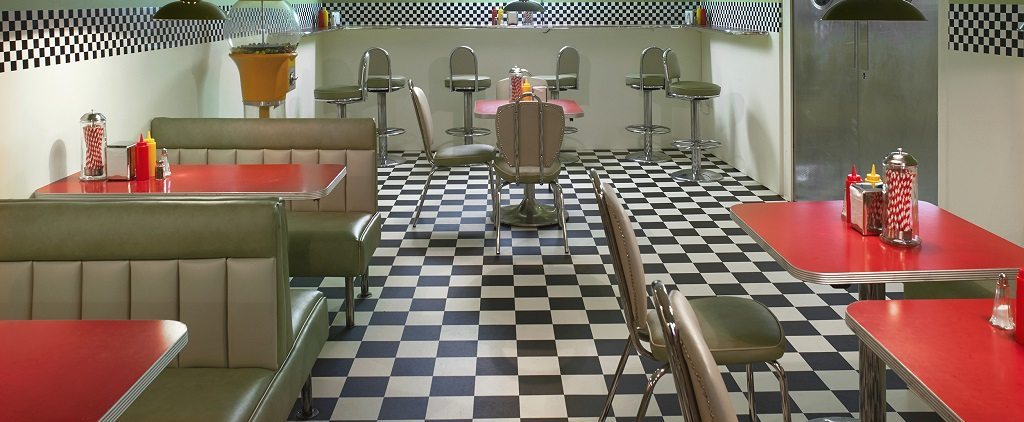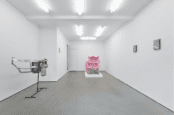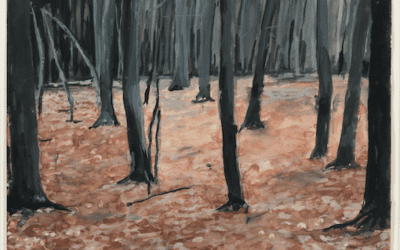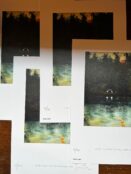Monira Al Qadiri‘s immersive exhibition at Gasworks transports viewers into an eerie world of American popular culture and extra-terrestrial visitations.
These seemingly disparate elements are interwoven with semi-autobiographical narratives to comment on global political and cultural currents. The artist laces the child-like concept of an alien conspiracy with the foreignness of international diplomacy in current political regimes.
Al Qadiri is a Kuwaiti artist who creates works that explore gender, politics and petro-cultures. Her works often draw upon personal experiences growing up in 1980s Americanised Kuwait. She references these influences in The Craft using fast food imagery. The sublime vision of a levitating hamburger materialises in the first pitch-black room. Its commanding spotlit and oversized form establishes America’s international authority. This is further suggested by a voiceover of the artist’s distorted voice recounting an excerpt from The Kuwait Urbanisation, a book by Saba George Shiber focusing on the beginnings of modernisation occurring in the country during the 1960s.
The narrator describes the unfamiliarity of the architectural landscape, remarking that the buildings during this time possessed otherworldly rather than earthly qualities. The gravity-defying hamburger is precariously generated by a fan beneath the object, highlighting the instability of this supposedly strong American influence. Its initial ethereal qualities dissolve on closer inspection once one’s eyes have adjusted to the lack of light, causing exposure of the fake paper cheese and Styrofoam bun. The sculpture’s blunt name, The End, acts as a warning of what American power may catalyse.
Two double doors with circular windows lead to a brightly lit American-style diner. Its green walls with black and white checked patterns are partially visible from the first room. Viewers literally sit in the work on green mock-leather seats to watch the centerpiece film, The Craft. At one point it details a spacecraft interior resembling a diner not dissimilar to the one surrounding the viewer. This eerie, sterile atmosphere is heightened in the moments before the film loops when only silence emanates from the room. Home videos and reenacted footage overlaid and interspersed with the artist’s alien drawings flash across the screen whilst Al Qadiri recalls and embellishes memories of these extra-terrestrials from her childhood and adult life.
Monira Al Qadiri, The Craft, 2017. Installation view. Co-commissioned by Gasworks and the Sursock Museum. Courtesy of the artist. Photo: Andy Keate.
Fact and fiction begin to merge as it becomes unclear which scenes and spoken memoirs are genuine. As the protagonist questions reality, one also begins to question current political and cultural realities. At the back of the room is a neon sign entitled ‘Omen’ that spells out “The Craft”. This retro style fits seamlessly with the diner surrounds, indicating that crafts, specifically international diplomacy – which the artist classifies as an art form in itself – is now a thing of the past. The melancholic tone of the narrator, VHS medium and music reminiscent of old sci-fi films are further suggestive of a prior era.
American culture and tactful international relations become alien concepts in Al Qadiri’s unique environments of contemplation. The political and American cultural overtones of this exhibition allude to observations of the Trump presidency, which many would argue lacks the tact of international diplomacy. Whether this is the artist’s intent or not, her works are certainly timely in today’s turbulent political climate.
The Craft is on display at Gasworks until the 10th of September.




















